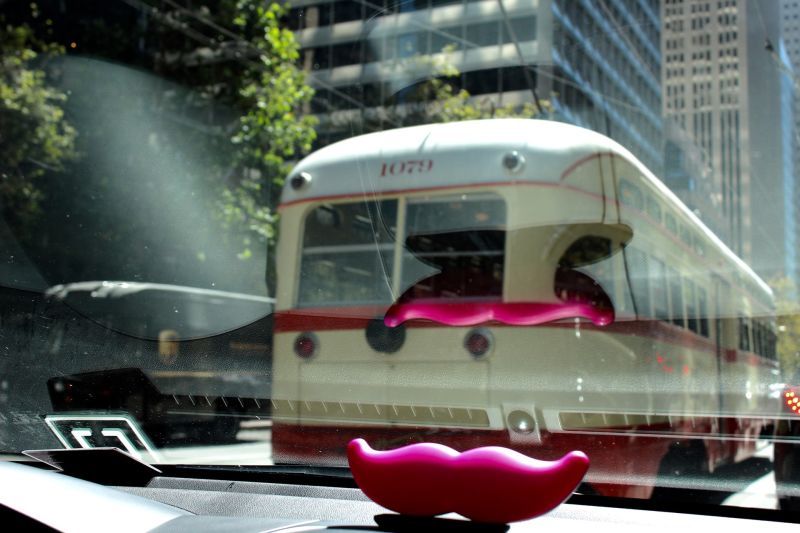All this might be about to change, however, now that Uber and Lyft have agreed to take part in a first-of-its-kind study by UC Berkeley's Transportation Sustainability Research Center and the Natural Resources Defense Council.
SFMTA officials are also conducting their own local survey, and ride-service companies say they are starting to work with some government planning agencies to at least hand over some data in a form they're comfortable with.
Lyft's director of transportation, Emily Castor, has pointed out that more than data are needed to understand how ride services might be changing travel habits.
"To really understand how our platform affects vehicle miles traveled, or greenhouse gas emissions, you need a comprehensive picture that actually exceeds the scope of Lyft data. You need to know what other kinds of transportation behavior people are engaging in," said Castor.
The UC Berkeley/NRDC study will be led by Susan Shaheen, a professor and noted transportation expert at Cal, and Amanda Eaken, the NRDC's deputy director of urban solutions and sustainable communities.
Eaken said the study is needed not only to test theories about how ride services are affecting the transportation sector, but also to advise cities and states about how to regulate and respond to these new companies.
What is particularly groundbreaking about the study, said Eaken, is that Uber and Lyft have agreed to turn over data, as well as embark on user surveys that ask questions like: What would you have done if Uber and Lyft were not available? Eaken stresses that the companies will have no editorial control over the results and are not providing any funding.
"The core of our research that we're really trying to get at is what modes are people leaving in order to use these [ride services]," said Eaken. "Maybe it's that it's more annoying to sit in traffic yourself and then have to circle for parking. We don't know, but what we do know is that there's a lot of dissatisfaction with the current transportation system."
The SFMTA's Papandreou is particularly interested in the number of trips in San Francisco, or basically a sample of how many people start and end trips by Zip code and their lengths. He also wants to know how many people are using carpool services like UberPool and LyftLine. Uber says more than 50 percent of its riders in San Francisco use UberPool.
"My personal goal is to see them integrated into the transport system and then become that option of first-last mile trip from longer travel transit or longer-travel higher-occupancy carpooling," said Papandreou.
More people in carpools mean fewer cars on the road. But, he said, "if they're really just an on-demand taxi service, then it hasn't helped the situation." The SFMTA is currently conducting a survey of 1,000 San Franciscans that it hopes will paint a better picture of how ride services are being used.
Overall, the transportation network companies still amount to less than 1 percent of all transportation modes in San Francisco, similar to taxis, according to the SFMTA. But more people are getting around without private automobiles.
The study by UC Berkeley and NRDC will focus on cities with ride-service pools, according to Newsweek, and include San Francisco, Los Angeles, Washington, D.C., and New York.
New York City officials, according to a Wall Street Journal report, are expected to release their own study soon on how ride services are impacting congestion in Manhattan. Mayor Bill de Blasio had attempted to put a cap on ride-service vehicles, but backed down after Uber led a relentless campaign to defeat it.
In San Francisco, taxi drivers claim they have seen more congestion as a result of ride-service drivers. Transportation officials say they are actually seeing a decline in vehicle miles traveled, but how ride services are influencing that remains an open question.
Eaken said her team hopes to release the results of the study sometime next fall.

